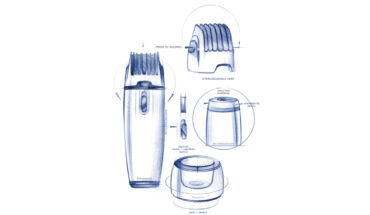Everything You Need to Know About the Various Strategies for SaaS Pricing
Have you put in countless hours as the founder of a young software-as-a-service (SaaS) company to create an excellent product? Is your team excitedly anticipating the launch when the beta tests are completed? What should you price your product at? Let us discuss all these questions here. Setting up the ideal price strategy can frequently feel like balancing a tightrope in the unpredictable world of SaaS. If you raise it too much, you run the danger of frightening potential clients. If you set it low, you risk losing money. Read here to learn more about the discipline of SaaS pricing tactics.
Cost-plus pricing
One of the simplest pricing strategies, cost-plus pricing, includes figuring out how much it costs to produce your SaaS product (maintenance, development, and server costs) and then adding the desired profit margin. For instance, if your project’s annual development and maintenance costs are $40,000 and your desired profit margin is 25%, you would set the cost of your item at $50,000. Although this strategy is simple, it ignores a crucial element: customer desire to spend.
Value-based pricing
Rather than focusing on manufacturing costs, value-based pricing, a powerful strategy, focuses on the perceived value buyers place on your goods. Take the business communication tool Slack as an example. Slack is primarily a messaging platform but also promises greater team collaboration, increased productivity, and easy tool integration. A high price is acceptable due to its great perceived worth.
Competitor-based pricing
In the increasingly competitive SaaS market, competitor-based pricing aligns your price with competitors. Pricing is a crucial differentiation for CRM software companies like Zoho and Salesforce, which offer similar capabilities. Be careful not to start a destructive price war. Instead, focus on what distinguishes your product to be either exceptional or better.
Tiered pricing
It’s common in the SaaS industry to have a wide customer base with a range of needs and price points. Introducing the tiered pricing approach offers various packages for your goods in an array of pricing ranges. Consider the pricing plan of HubSpot. They provide packages with different features and prices geared at startups, businesses, and everything in between.
Dynamic pricing
Dynamic pricing, which is still fairly fresh in the SaaS market, adjusts prices in response to demand, market conditions, and user behavior. For instance, an email marketing platform may temporarily raise pricing to reflect high demand during the holiday season when firms expand their email advertising.

Elaborating on the Quick Facts on SaaS Pricing
The content below is based on insights from the renowned metering and user-friendly billing platform, Togai (https://www.togai.com/). Consider the following quick facts about SaaS pricing before reading further:
- 39% of SaaS organizations spend only ten hours or fewer annually on pricing strategy.
- Eighty percent of businesses alter their prices at least once annually, and many do so repeatedly.
- The fundamental adjustments to pricing strategies made by 98% of SaaS organizations have had favorable effects.
However, you should understand that most SaaS companies spend more than 10 hours per year on pricing strategy, despite approximately 100% of SaaS businesses improving by changing their fundamental pricing. Spend more time on it and evaluate it frequently to improve your pricing strategy. Strike a balance between optimization and client satisfaction.
The freemium business model, used by SaaS behemoths like Dropbox and Canva, provides an essential product version for free and charges for additional, more advanced capabilities. It’s an excellent method to highlight your product’s benefits, but proceed cautiously. Users could neglect the need to upgrade when the free version is too rich with features.
Utilizing the billing ecosystem to implement a pricing strategy
Pricing monetizes your items, the market, and the perception of worth among customers, whereas billing collects money. After deciding on your chosen pricing approach, pick a billing environment that facilitates its implementation. Ensure the billing system has features like free trials, easy setup and maintenance, frequent billing, targeted advertising, integrations, and effective invoices.
Billing software as a revenue-generating machine
Your billing ecosystem should guide customers through every step of the revenue cycle, including sign-up, consumption, line item generation, billing dates, invoice issuance, and payment processing. Your pricing plan should be consistent with each function.
An Overview of Various Types & Components of Pricing Model
Pricing model types
SaaS startups often use five pricing models:
- Flat rate pricing: This is simple, with ongoing costs.
- Usage-based pricing- These charges depend on what customers use.
- Prepaid model- This requires a one-time payment regardless of consumption.
- Hybrid pricing model – This combines various payment schemes.
- Event-based billing: This fee is assessed in response to particular client behaviors.
Your business model, total product cost, value proposition, revenue optimization, and competitive environment all play a role in choosing the best model.
Components of your pricing model
Several components shape your pricing model:
- Business Model: Pricing is impacted by high- or low-touch techniques.
- Value Proposition: Pricing is determined by how customers perceive value.
- Total Cost: Composed of fixed, variable, and profit margin charges.
- Revenue Optimization: Establishes targets for revenue and profit.
- Competitive Environment: Impacts value-based pricing and differentiation.
Wrap up
Level up! Do not remain as one of the SaaS businesses that ignore revenue opportunities. Employ a value-based pricing strategy to ensure invoicing and pricing are focused on the consumer. In the SaaS industry, this makes you stand out. Develop a strong billing environment and fine-tune your pricing strategy to drive hyper-growth for your SaaS business.
Remember that your price strategy should support your company’s goals and, most significantly, satisfy your clients’ needs. Ensure your tools complement your pricing plan and overall monetization objectives while keeping an eye on the broader picture. Ultimately, your pricing plan should create a win-win situation for your SaaS business by generating income and providing unparalleled value to your consumers.






